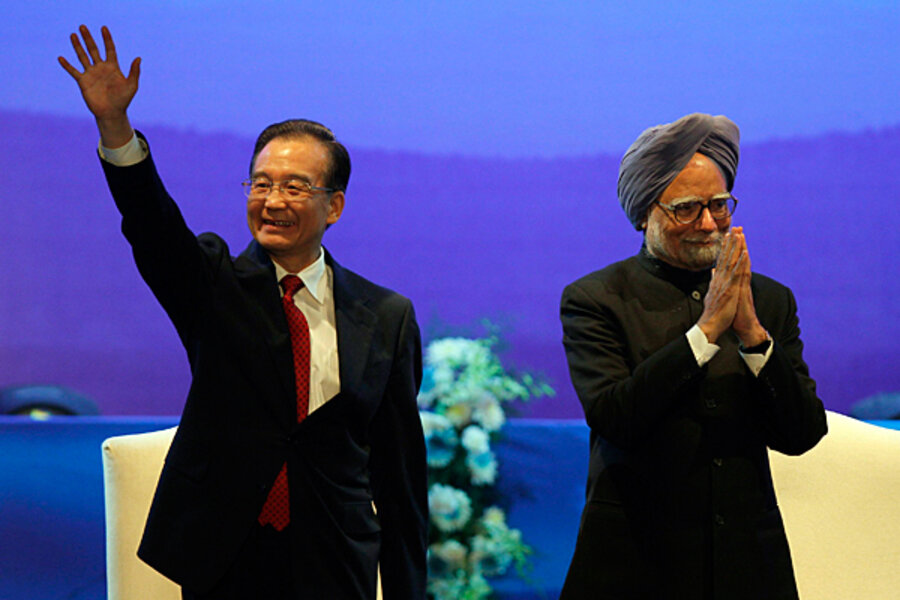India, China shake hands on trade, but border disputes prove intractable
Loading...
| New Delhi
India and China sealed $16 billion worth of trade deals during Chinese Premier Wen Jiabao's visit to New Delhi, but many of the sore points between the Asian giants were left to future diplomacy to sort out.
Perhaps most alarming to analysts are the two countries' longstanding border disputes, which have proven intractable and contributed to wider Asian nervousness about China.
While Mr. Wen and Indian Prime Minister Manmohan Singh pledged to resolve such disputes “at an early date," and also agreed to set up an emergency hotline and hold more frequent high-level visits, some analysts are concerned that the continued failure to resolve the border standoff has created an atmosphere of mistrust and military wariness in the region.
“It’s 29 years of negotiations on the border with nothing to show because the Chinese have been taking India around the mulberry tree, they commit to something and reinterpret it later,” says Brahma Chellaney, a Sino-India expert at the Center for Policy Research, an independent think tank in New Delhi. “The talks are deadlocked now.”
The two countries fought a brief border war in 1962. The ceasefire left China in control of a Switzerland-sized area known as Aksai Chin that India still claims, while the Indians have held on to Arunachal Pradesh, a territory the size of Austria claimed by the Chinese.
Indian history of the border dispute has tended to cast China as an aggressor, with Beijing launching a surprise military incursion.
A new book by Indian lawyer A.G. Noorani suggests that in the years running up to 1962, India’s first Prime Minister Jawaharlal Nehru contributed to the eventual standoff. Mr. Nehru drew border lines unilaterally in areas with undefined borders, and then ordered old maps to be destroyed. In 1960, China offered to settle the borders but India did not see a deal through, claims Mr. Noorani.
“There were diplomatic mistakes on our part when we didn’t settle the issue in 1960. Now that doesn’t justify China’s attack in 1962,” says Noorani, author of “India-China Boundary Problem, 1846 – 1947,” published by Oxford University Press. India’s Vice President Hamid Ansari held a release party for the book Wednesday night in his New Delhi home.
Noorani says he hopes his book will help make compromise on the border issue easier “because I believe India should not be in an alliance [with the US] against China and we should follow our own line.”
The decades-old problem “won’t be solved in a jiffy, it needs preparation.” But he sees the current Indian government as capable of finally getting an agreement with the Chinese.
Dr. Chellaney disputes that the Chinese were in the mood to settle in 1960 – or at any other point.
“The fact is the Chinese have never put forward a concrete proposal,” says Chellaney. “You can’t talk about missed opportunities when nothing has been put on the table.”
Indian and Chinese negotiators have met 15 times since 2003 and an additional 25 times since 1981, he says, arguing that it’s a deadlock that should concern the wider world.
“This border dispute has the potential of creating not only bilateral military conflict but a conflict that involves other military powers,” says Chellaney. “This dispute includes not just land but water issues which is central to the future of Asia.”
Despite the geo-strategic tensions, India and China have expanded trade greatly in recent years, with bilateral trade expected to touch $60 billion by year’s end. During Wen’s visit, the two countries set a new target of $100 billion.
However, India remains concerned about the imbalanced nature of the trade in China’s favor. India’s Foreign Secretary Nirupama Rao told reporters Thursday “we would like more market access,” particularly for Indian pharmaceuticals, IT, and agricultural products.





